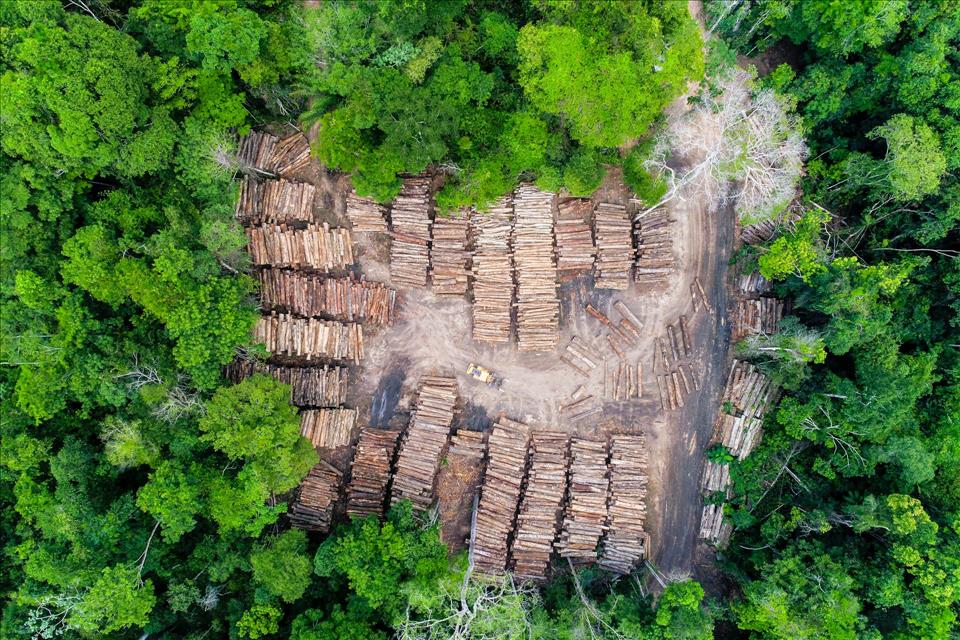
Amazon Deforestation Cut By 83% In Places Protected By Indigenous Communities New Research
By combining satellite imagery for the entire Amazon region with data from the Brazilian national census, our new study found that deforestation in areas protected by Indigenous communities was up to 83% lower compared to unprotected areas. These results show that Indigenous communities can play an important environmental stewardship role by helping to prevent deforestation by people encroaching on their lands.
However, our results also show that Indigenous communities had the lowest levels of socioeconomic development. Incomes in Indigenous territories were up to 36% lower compared to other land uses.
Indigenous people are among the most disadvantaged groups of people in the world . Although Indigenous communities in Brazil have strengthened their political representation in recent years, 33% of people living below the poverty line are Indigenous .
Improving the economic wellbeing of Indigenous people is not only the socially just thing to do but can also be environmentally effective. Research in Nepal showed that communities with higher levels of socioeconomic development are less likely to trade off development with deforestation. Providing communities with the ability to protect and conserve their local forests and develop economically can be a win-win for both people and the environment.
In 2022, governments across the world agreed to protect 30% of the planet's surface by 2030 . To meet the commitments of this 30x30 agenda, many countries need to drastically increase their conservation efforts to reverse deforestation in the Amazon and beyond.
Governments and philanthropic organisations pledged unprecedented political and financial support for forests and Indigenous peoples and local communities at the 2021 COP26 climate summit in Glasgow. These pledges have helped raise the voices of Indigenous peoples and ushered in a new era of commitments to return ancestral lands.
Yet, forests and their resources across the world remain coveted by many different interest groups, including mining and large agribusiness. The Supreme Court in Brazil is currently debating the constitutional validity of the controversial “Marco Temporal” or time limit framework which could substantially limit the ability of Indigenous peoples across the country to make claims for lands. This legal theory states that Indigenous peoples are only entitled to make claims for lands if they can prove that they were in possession of them on or before October 5 1988 when the Brazilian constitution came into effect.
Protesters hold placards expressing their opinion during the demonstration. The Marco Temporal thesis, indigenous, and supporters of the indigenous movement met in downtown Rio de Janeiro, Brazil, in May 2023. ZUMA Press Inc / Alamy Stock Photo
Perhaps surprisingly, our results show that agricultural business development of the Brazilian Amazon is unlikely to provide greater socioeconomic benefits for local, non-indigenous communities than protection-focused alternatives that preserve forest cover but allow sustainable resource use by rural communities. But the agribusiness lobby in Brazil, who are often in direct conflict with Indigenous people , often argues that agricultural expansion will provide economic development for the region.
Our results demonstrate that returning lands to Indigenous communities can be extremely effective at reducing deforestation and boosting biodiversity to help address climate change. Yet, forest conservation should not come at an economic cost to people living in Indigenous-managed lands.
Access to land and opportunityIndigenous communities need to regain access to their ancestral lands while also gaining access to development opportunities. Indigenous people in Brazil are eligible to receive support from social welfare programmes, such as the family allowance scheme (or bolsa familia in Portuguese), which is credited with lifting millions of Brazilians out of poverty and reducing inequality.
However, many rural and isolated communities face substantial difficulties accessing support. For example, fuel costs to take long boat trips from remote communities to urban centres to collect payments are high and many communities lack access to technology to even apply for such schemes.
President Lula Da Silva's government is considering developing an Indigenous family allowance programme to address access problems faced by Indigenous communities in Brazil. As efforts to return rights to land ramp up in the wake of the 30x30 agenda, more governments and nongovernmental organisations should support the many other rights that Indigenous peoples have and reduce the structural barriers that prevent rural communities from claiming them.

Legal Disclaimer:
MENAFN provides the
information “as is” without warranty of any kind. We do not accept
any responsibility or liability for the accuracy, content, images,
videos, licenses, completeness, legality, or reliability of the information
contained in this article. If you have any complaints or copyright
issues related to this article, kindly contact the provider above.

















Comments
No comment